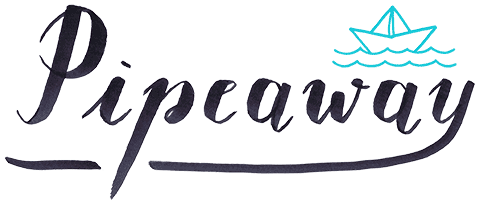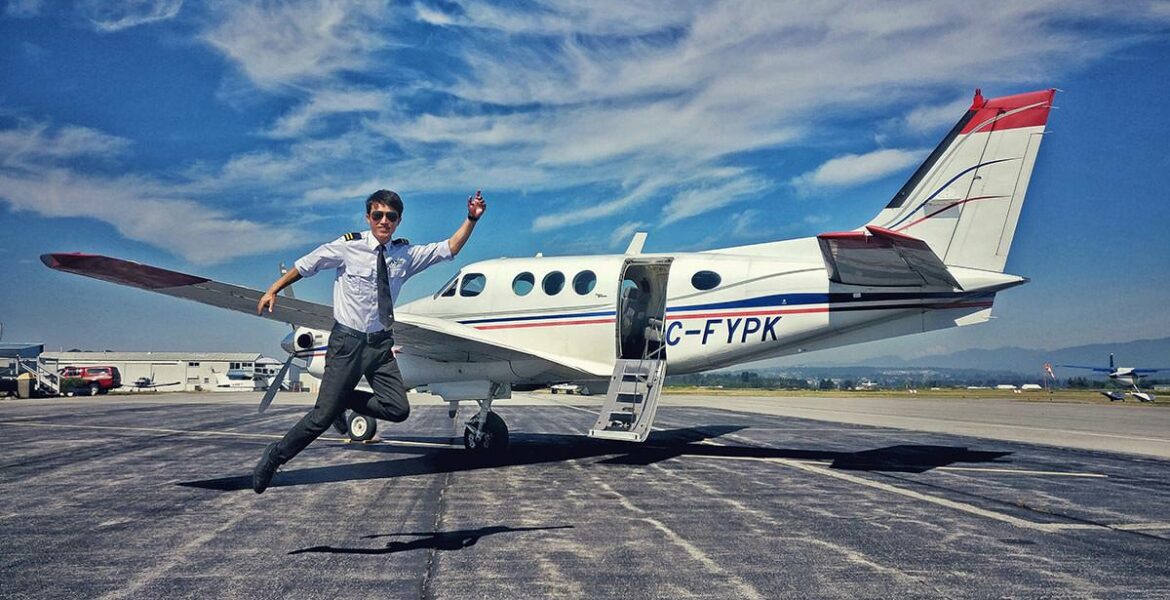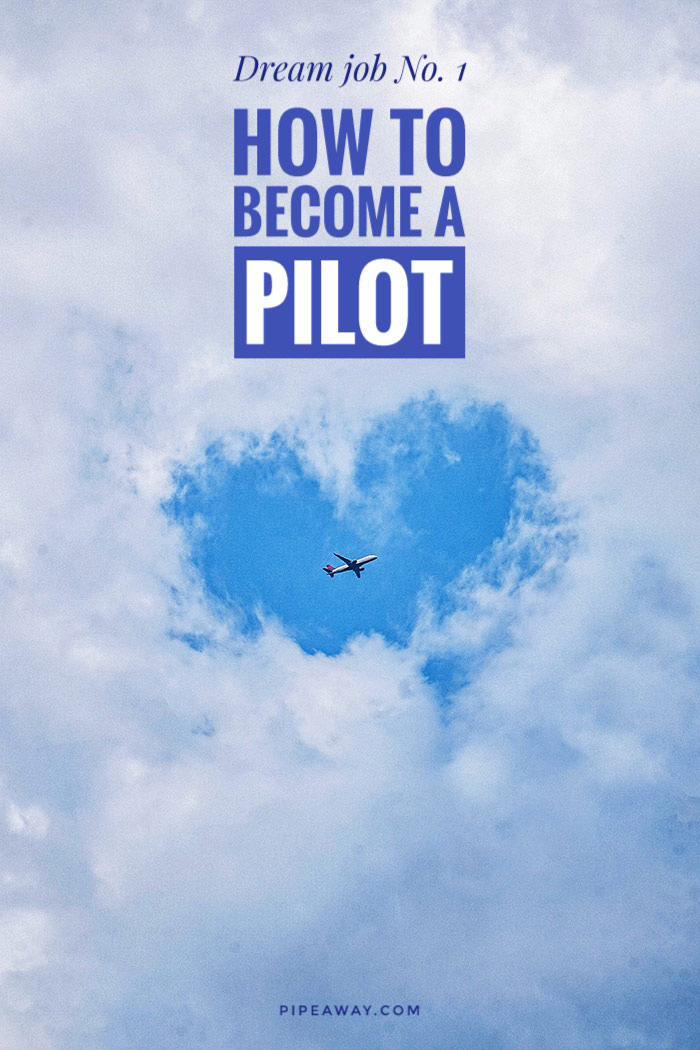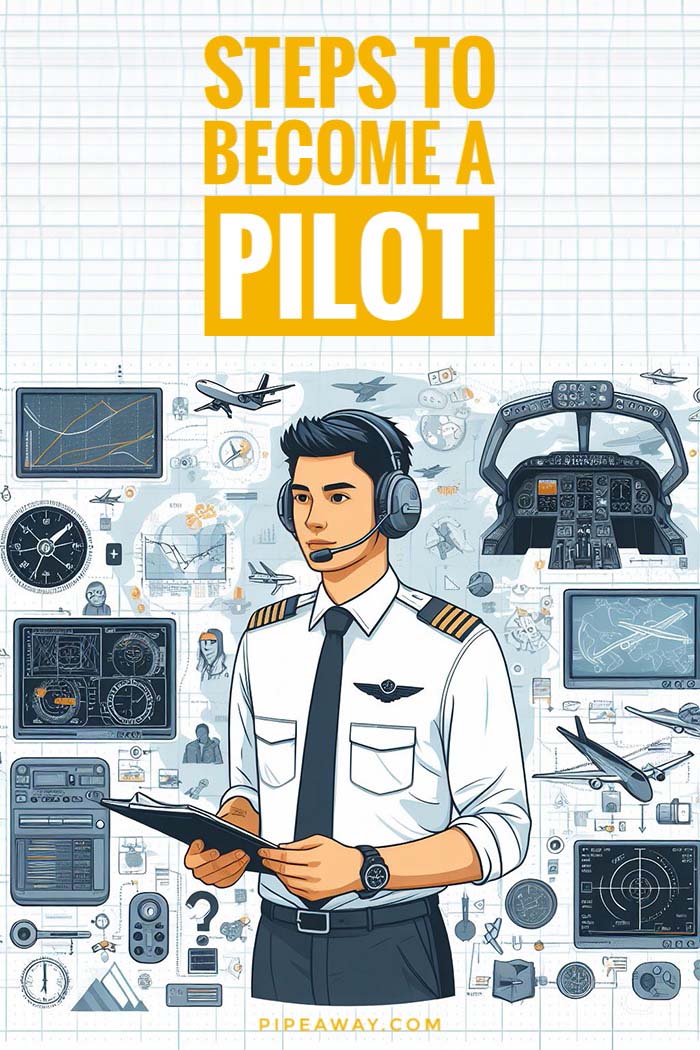‘How to become a pilot?’ is a question that arises in many dreams. And I’m not talking only about the dreams of becoming a pilot as a kid but as a career choice.
The worldwide global search analysis has shown that pilots are one of the most sought-after professions. Besides telling us that in a year 930.630 people ask search engines ‘how to be a pilot’, the result also reveals there is a mystery about it: indeed, how do you become a pilot?
Six times more people search for ‘how to be a pilot’ than for ‘how to be an influencer’
The British company Remitly analyzed Google search data to determine the frequency of the ‘how to be a [job]’ query occurrence in every country in the world. The most-searched-for job was then interpreted as the most popular dream career in that specific country.
Pilots were the top result in 25 countries, including the United States, Canada, United Kingdom, Ireland, Moldova, Montenegro, Cyprus, Australia, and some smaller island states in Oceania.
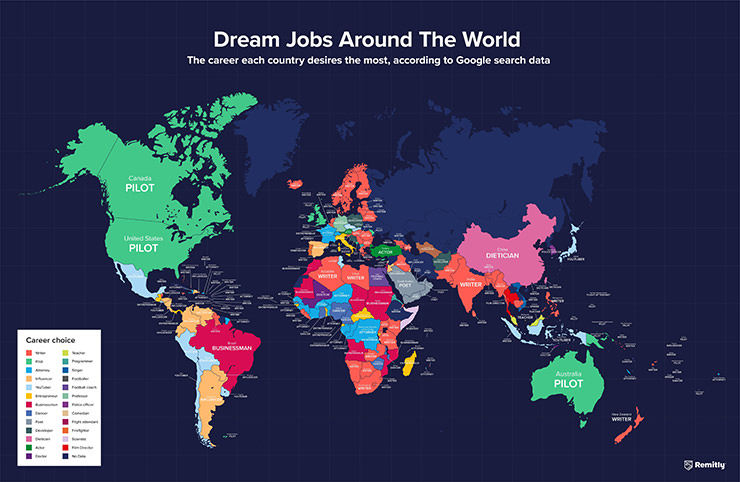
While being a writer ended up at number two and being a dancer at number three on the global chart, thus revealing art and culture as highly interesting career fields, pilots still had the most impressive search volume worldwide.
As a matter of fact, pilots were five to six times more popular than Youtubers and influencers, or nine times more popular than bloggers and doctors!
The second air travel job, that of a flight attendant, was also high on the global scale, at the 15th spot worldwide, just above firefighters, judges, lawyers, and psychologists.
When we have almost a million people asking Google annually ‘how to be a pilot’, it is obvious that even 120 years after the Wright brothers’ first flight, there are still plenty of us who want to conquer the skies.
In this guide, learn how to become a pilot, step by step!
Pilots are a great information source! I eavesdropped on one pilot's conversation, and thanks to that, I've learned why I should always pick the last seat on the plane.
Age limit for becoming a pilot
How old do you need to be to become a pilot?
The minimum age requirement for becoming a pilot depends on the type of pilot license you are applying for. For a student pilot, the minimum age is 16, for a sport or private pilot 17, for a commercial pilot 18, and for an airline transport pilot permit the minimum age is 23.

How old is too old to become a pilot?
As long as you have good health and fitness, there is no law-required maximum age limit for pilot training. The only real exception is the airline transport pilot permit; this one cannot be obtained or renewed after the age of 65. So as long as you are not aiming at it as a career, you can keep flying even after your retirement.
How long does it take to become a pilot?
The amount of time needed to become a pilot really depends on the type of pilot certification you want to pursue.
As a student pilot, you could count on your first solo flight after about 2 months.
For sport pilots, recreational pilots, and private pilots, training programs usually last 3 months.
Becoming a commercial pilot can take about 9 months if you start with zero experience.
Because of the high number of needed flight hours, getting an airline transport pilot license can take between 2 and 5 years.
A pilot's job does come with its set of everyday challenges. As confirmed by people constantly flying, you are more prone to experience the feeling most easily explained as a travel fogginess or traveler's confusion - learn what you need to know about that phenomenon!
3 steps to become a pilot
If you plan to become a pilot, it’s important to know that the exact process, as well as the cost associated with becoming a pilot, might differ depending on the country you live in, and the aviation authority in charge. Always check with the local civil aviation authority for up-to-date information on how to become a pilot!
In general, these are the most common steps to becoming a pilot:
Step 1: Pass the medical exam
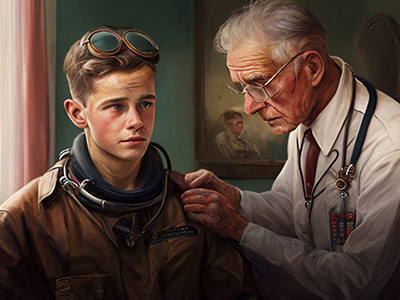
The first step to become a pilot is passing the medical examination. While this is not a requirement for sport pilots, for instance, it’s good to obtain the health certificate so you can be sure there’s no hidden issue that might stop you from becoming a pilot.
Depending on the type of pilot license, there are various classes of medical certificate requested, from the third class for a private pilot, the second class for a commercial pilot, or the first class for an airline transport pilot.
The flight physical examination checks your general medical and neurological condition, vision, hearing, equilibrium, cardiovascular system, and mental health.
Depending on the certificate class, the requirements might vary, and the validity of the certificate differs according to the candidate’s age.
Step 2: Learn how to fly
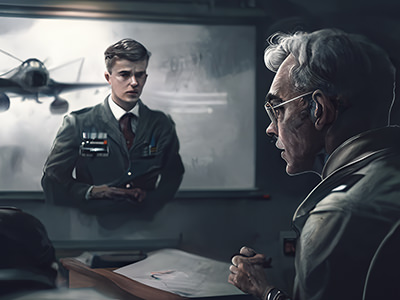
There are two distinctive parts of learning how to fly: ground school and flight school.
The ground school teaches about the theory of aviation, aerodynamics, flight planning, meteorology, and navigation. This education, whether done in a classroom or as a home study, is crucial for passing the aeronautical knowledge test.
The flight school is a practical education on operating an aircraft, communicating with air traffic control, and executing a variety of flight maneuvers and procedures. This part of the pilot education ends with a practical test, the so-called checkride flight.
While you can take flying lessons with an instructor, you will need a student pilot license before flying an aircraft alone.
Step 3: Collect flying hours
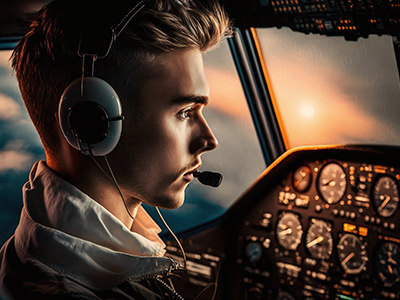
From here on, obtaining various levels of pilot licenses depends on passing knowledge and practical tests, as well as logging the requested amount of flight time. Also, lower-tier licenses are prerequisites for obtaining higher-level ones.
For a sport pilot license, which enables you to operate light-sport aircraft (gyroplanes, gliders, balloons), you will have to gain 20 flying hours.
A recreational pilot license could entitle you to fly more complex aircraft, even by night, but you will need to collect 30 flight hours.
With a private pilot license, you will be able to operate aircraft with passengers, but not for money. The minimum number of flight hours to obtain this license is typically 40.
A commercial pilot license will enable you to execute some paid activities, such as banner towing, agricultural operations, or skydiving flights. You will have to accumulate up to 250 flight hours and get instrument rating certification.
Finally, an airline transport pilot license entitles you to work as a member of an airline crew, but you will need to get additional certifications such as instrument and multi-engine rating. Also, at this stage, you will need to have 1500 hours of flight (at least in the United States).
To be able to accrue such a high number of flights, many pilots choose to become flight instructors (another special permit), as all hours spent in the air add up. Getting paid while getting flying experience is not a disadvantage either.
There are obstacles and limits to becoming a flight attendant too. One of them could be your weight. Find out if you could join the plus-size cabin crew!
Airlines and military – other options for becoming a pilot
Besides going through a pilot school or aviation university, there are other options for starting a pilot career.
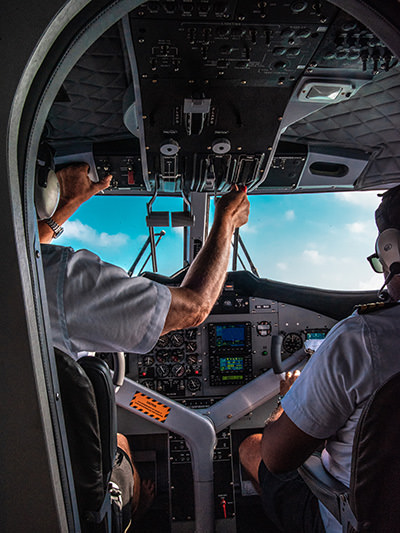
One route for becoming a pilot is by joining cadet pilot programs offered by larger airlines. Even without a job offer guarantee, candidates who successfully finish the program at least secure an interview with their carriers. If you already know that you want to become a major airline pilot, with, let’s say, American Airlines, Delta, or Emirates, the best path is to go through their training academies.
The other route for becoming a pilot is the military one. If you already know you want to become a fighter pilot in Air Force or in the Marines, for instance, joining the military aviation divisions in the armed forces is a way to go. Of course, the military path is a demanding one, but if you seek overseas missions, it comes with its own set of perks.
Flying planes brings a lot of privileges. For a start, it provides exclusive perspectives of Earth that pedestrians do not experience. Heart-shaped islands offer some spectacular views from above!
Choosing a pilot specialty
Pilots can specialize in different areas, from helicopter piloting and military aviation to large commercial jets. As a pilot, you can engage in fire fighting, law enforcement, search and rescue operations, or casual sightseeing tours.
Whatever you choose to do with your career in aviation, remember that every flying hour or knowledge gained will help you down the road (runway?), even if you later choose to change your pilot specialty.
There are dozens and dozens of career paths for pilots, and these are the quick answers on how to become some of them.
How to become a helicopter pilot
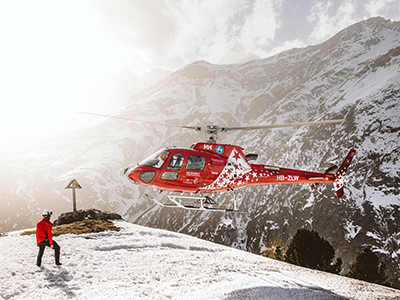
Requirements to get a helicopter license as a private pilot are similar to the requirements for a fixed-wing aircraft.
The difference is in obtaining a commercial helicopter pilot license; the main request is logging at least 150 hours of flight as a pilot, out of which 100 hours have to be in a helicopter. There are also additional requirements around night flights and cross-country flights.
To become a helicopter pilot with an airline transport license, 1200 hours of flight are needed, including a certain amount of nighttime flying, cross-country flying, and hours flown by instrument.
In order to become a police helicopter pilot, the best path is to join the police as an officer, become a tactical flight officer, and eventually earn the pilot license to be able to perform the duty. There is an option of first getting a pilot license and then joining the police force, but it all depends on the specific police agency.
To become a Coast Guard/Navy helicopter pilot, one should already be an officer in these armed forces branches or a flight-school graduate in another branch.
If you want to become an air ambulance/medevac pilot, hospital helicopter transport companies will typically require between 1000 and 2000 hours of flight time. This includes flight by instruments as candidates have to be able to demonstrate the ability of rescue flying in all weather conditions.
How to become a drone pilot
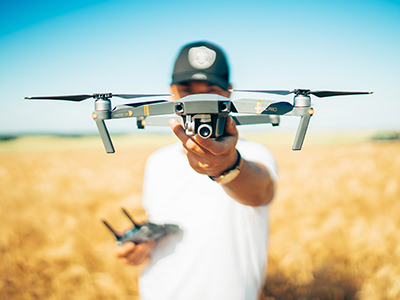
Drone pilots are relatively a new profession, recognized by the FAA in 2016. The minimum age for flying a drone (or an unmanned aerial vehicle – UAV) is 16, and you don’t even have to pass a blood pressure test!
While flying a drone can be just a fun hobby activity, there are a lot of commercial possibilities to exploit the skills, so becoming a certified drone pilot makes sense.
In order to get and keep a drone license, one needs to pass an aeronautical knowledge test and pass a training course every two years.
When you become a commercial drone pilot, income can arrive from marketing engagements (from real estate to theme parks), covering entertainment events (from concerts to sports), mapping the area (from construction projects to the mining industry), surveillance (from insurance companies to public safety operations)…
How to become a private jet pilot
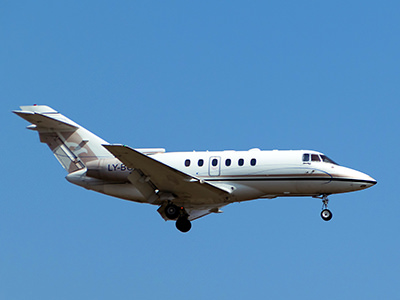
If you’re excited about flying together with celebrities, VIPs, and business people alike, pursuing a career as a private jet pilot could be your chosen course.
To become a private jet pilot, you will need a private pilot license. But that will only allow you to fly your friends around, in your own plane (if you can afford it). To be hired by companies, a commercial pilot license will be required.
After securing a license, you just need to get hired. You can look for jet cards or charter jet companies (managing air taxis, sightseeing trips, or any business or pleasure-related travels requested by the hiring party), or for corporations and individuals who own their own jets (in which case you would be flying only for the jet owner’s needs).
Business aviation requires more flexibility from the pilot, but it can also offer competitive compensation and benefits, such as relaxing at exotic travel destinations.
How to become a cargo pilot
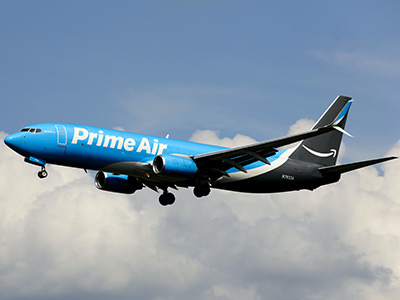
If you dislike making passenger announcements or don’t want to deal with complications arising from delays and emergencies, becoming a cargo pilot could be what you’re looking for.
Delivering mail, packages and other freight for companies such as FedEx, UPS, or Amazon, requires an airline transport pilot certificate, and a minimum of 1500 flight hours, out of which at least 1000 as pilot-in-command. Oh, and FedEx will test you for drugs before employing you!
If you choose a small cargo operator that flies only in visual conditions, you could start your pilot career already with a commercial pilot license, and 500 hours in the air. Cargo pilots operating in instrument flight rules can sometimes get an entry-level job already after 1200 flight hours.
Piloting cargo planes brings a comparable compensation package as flying with live passengers, and yet it offers more flexible schedules, and most often daytime flying.
How to become a jump pilot
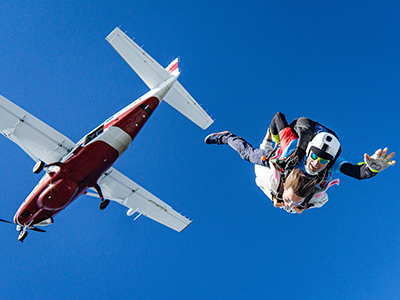
Another specialization path in aviation is becoming a jump pilot. Skydiving is a popular sport, and dropping happy bombs, a slang term for practitioners of this extreme sport, is no less exciting.
It’s a job that comes with a lot of responsibility (live cargo in the back of the plane) and requires a lot of skill (even when you drop that cargo, you still need to be able to navigate through the airspace filled with freefalling people).
To become a jump pilot (and get paid for the job), one would need a commercial pilot license. Most insurance companies require between 350 and 500 flying hours though; after all, dumping passengers out of the plane is not a game.
On the other hand, danger brings excitement, so this is not a job you will fall asleep behind the wheel. As for the risk assessment, there is a comfort in the fact that, as a pilot, you’d be also wearing a parachute, just in case.
How to become an ag pilot or crop duster
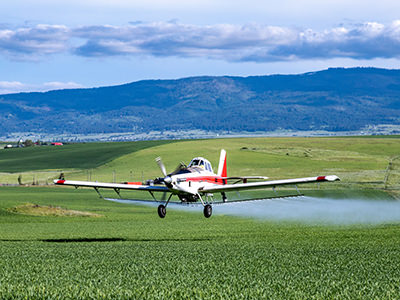
Agricultural pilot or ag pilot, formerly known as a crop duster, is an exciting profession executing a variety of tasks. They spray farmlands with pesticides or fertilizers, plant seeds by aerial dropping, gather data on vegetation and the environment, or even double as water bombers in areas with wildfires.
To become an ag pilot, one needs a private pilot license, but also specialized training about agricultural chemicals and application procedures, as well as technical knowledge of flying at low altitudes with potentially hazardous obstacles.
Many aerial applicators start their career as ground staff, so get ready to learn about mixing chemicals, and loading the plane.
Ag pilots can count on getting work assignments from specialized crop dusting companies, business and farm owners, but also environmental agencies.
How to become a bush pilot
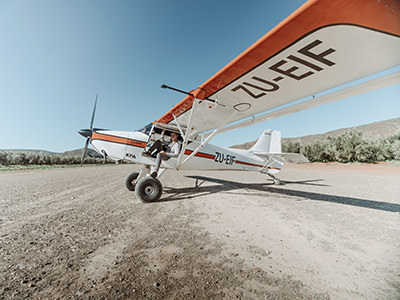
Backcountry flying job typically involves missionary aviators (with faith-based help for isolated people) or commercial bush pilots (supporting tourism or resource industries).
Bush pilots operate in the world’s most remote areas, delivering supplies and people to locations that conventional airlines cannot easily reach. This means flying without counting on prepared landing strips and runways, or other operational support.
Besides being more dangerous than other pilot jobs, due to its nature, the bush pilot profession comes with additional requirements. While commercial and instrument pilot certificates, as well as high-performance endorsement, are requested, you will need to log double flying time in comparison to your pilot colleagues – 500 hours.
But if you are into unique adventures above Canada, Alaska, South Africa, Australia, or New Zealand, which means visiting wilderness with not many inhabitants, becoming a bush pilot is a career worth investing in.
How to become a seaplane pilot
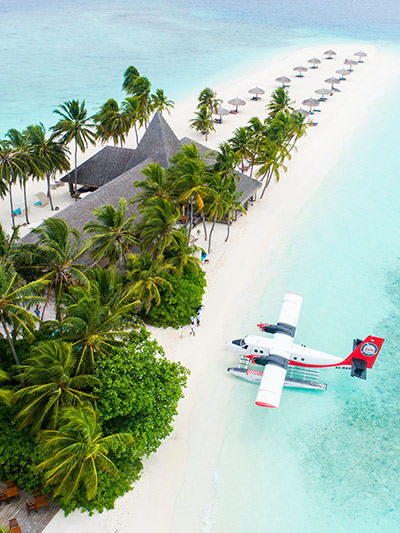
If you want to fly and land anywhere where there’s water (hm, is landing the correct word in this case?), training for float planes is a must.
To become a seaplane pilot, you will need a single or multiengine sea class rating on your airman certificate, or sport pilot license with seaplane endorsement.
While you can learn how to fly on any type of aircraft, only training on an actual seaplane will teach you about water operations.
To add hydrodynamics to your aerodynamics knowledge, you can take training courses that can request anything between 7 and 50 hours in the air.
After learning everything you need to know about wind and water, you’ll be operating flying boats in no time.
How to become a hot air balloon pilot
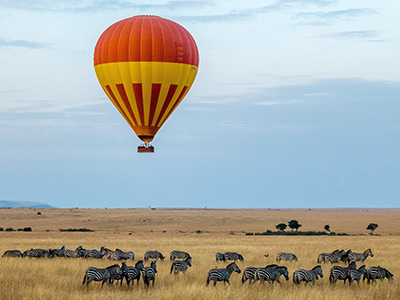
If you like the idea of entering an exposed suspended gondola and having an opportunity for a 360-degree view during a flight, piloting a hot air balloon is for you!
In the United States, a private hot air balloon pilot license can already be obtained when you are 16. You will, of course, need to pass the exams, but also accumulate 10 hours of flying experience (in the UK, it’s 16 hours).
If you want to be able to be hired, charge for your flights, or use balloons for advertising, you will have to wait until you are 18. Besides obtaining a commercial pilot license, you will also need to accrue 35 hours of flying.
Of course, in order to become a hot air balloon pilot, it is sometimes easier to first become a flight crew member. This will enable firsthand education while getting paid for assistance.
How to become a blimp pilot
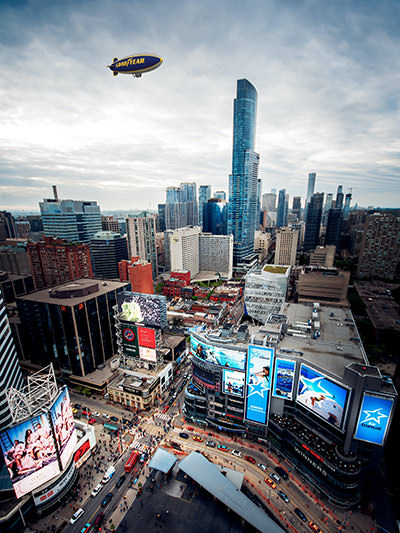
If you agree that flying a hot air balloon comes with magic, you’ll certainly confirm that a blimp has a special charm too.
Due to the cost of operating an airship (but also probably because of that flaming 1937 Hindenburg Zeppelin image that burned into our minds), lighter-than-air aircraft are extremely rare. There are only 25 blimps operating in the entire world!
Today, blimp pilots do not work in transferring passengers as much as in advertising (Goodyear Blimp is the most famous one). But how does one start to ride this gigantic billboard?
To become a blimp pilot, the candidate has to have a commercial rating (on whichever aircraft), as well as an instrument rating. Then you also need to train to pilot a Glimp for at least 50-100 hours.
If you are happy with spending many hours on the road (after all, airships are not fast), take on this helium-charged adventure that everyone will notice.
Do you want to go even higher than the stratosphere? Then you have to learn everything about traveling to space!
Further reading: Books on how to become a pilot
If you want more in-depth knowledge on becoming a pilot, here’s a selection of well-rated books for further reading:
Vesa Turpeinen is a chief flight instructor at a major flight academy, and he wrote two books in the pilot career series. “Learn to Fly and Become a Pilot” is the ultimate guide for determining your capabilities of becoming a professional pilot and getting started with flight training. “What to Expect from Flight Training” explains the overall process of obtaining pilot certificates and ratings.
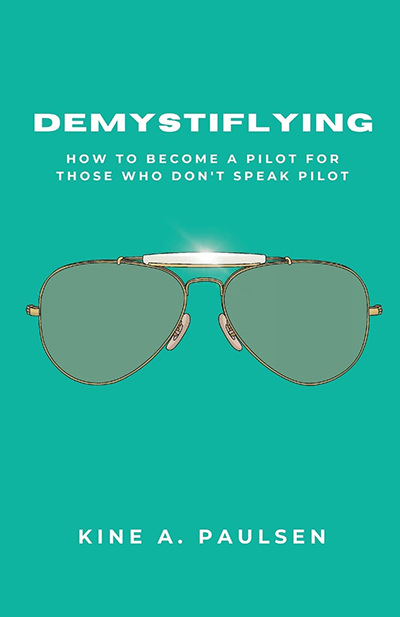
In her book “Demystiflying”, Kine A. Paulsen explains how to become a pilot to those “who don’t speak pilot”. For this 101 pilot guide, she talked to more than 200 pilots and aviation experts. If you’re intimidated by aviation jargon, this entertaining book could motivate you to not give up.
Noemí Prat, a flight attendant turned pilot, wrote a guidebook called “Future Pilots Checklist”. The book clears up the industry’s most common misconceptions, gives tips and tricks to excel during training, reveals requirements but also funding options, and includes both European (EASA) and American (FAA) regulations.
While all these books fall into a price bracket between 10 and 20 dollars, you can also test the pilot grounds with audiobooks you could listen to free of charge with Audible. Both “How to Become an Airline Pilot” by Robert Lawrence, and “How to Become a Pilot in Europe” by Kudzanai Chikohora, promise that you can achieve your pilot dream job without going broke.
Conclusion: Is becoming a pilot worth it?
Since they’ve seen first birds gliding through the air, until the Google searches of the new age, people have been fascinated with flying.
While they learned to stay afloat on the water quite quickly, overriding the gravity high in the air was a challenge for a long time, a challenge that took many sacrifices.
Becoming a pilot can be expensive, but the job comes with a solid payroll
We live in an era when flying is often taken for granted. But beyond this omnipresent human technology, there is a history of trials and errors, as well as constant advancement in bettering our flight machines.
Today, we can take the leap in a matter of weeks, sometimes quicker than it takes certain students to get a car driving license!
Becoming a pilot, however, can be an expensive game. Pursuing flying as a hobby has to be justified by a deeply rooted love for one of the oldest human dreams. Love for flying is obviously a requirement for the career path too. Still, commercial pilot operations at least come with a solid payroll, which sooner or later annuls the initial investment.
While it takes work and sacrifices, becoming a pilot also delivers extraordinary rewards. Air travel brings passengers to some great world destinations, but the exclusive privilege of entering a cockpit, that control center of our mechanical birds, is a worthwhile destination by itself.
Did you like this article on steps to become a pilot?
Pin it for later!
Disclosure: This post may contain affiliate links, which means if you click on them and make a purchase, Pipeaway might make a small commission, at no additional cost to you. Thank you for supporting our work!
